Whenever we talk to people and businesses about HubSpot we seem to get a wide mix of reactions.
These reactions include:
- “I’ve heard of it but not sure what it is”
- “We’ve looked into using it before but it’s too expensive”
- “We use Mailchimp instead”
- “We don’t need a CRM”
The general consensus is that there is quite a bit of confusion about what it does, how it helps and why it costs more than Mailchimp.
Let me start off with this. Comparing HubSpot and Mailchimp is like comparing a butter knife (Mailchimp) and a Swiss Army knife (HubSpot). If you need to make a tasty sandwich then you don’t need all those additional tools and a butter knife is all you need.
BUT, if you are out in the wild with Bear Grylls and he needs your help and you rock up with a butter knife then well let’s just say you didn’t come prepared.
A Swiss Army knife will have been much more appropriate.
Maybe a bit of an odd example but hopefully you get my point.
Knowing which tool is right for the job is an important part of any marketing or sales strategy as using the wrong tool will cost you more time, be less effective and cause unnecessary frustration.
And in some cases, it can also be more expensive. Whether that’s directly through additional software cost or indirectly through time wasted by using the wrong or multiple tools.
To start us off let me position HubSpot for you.
What is HubSpot?
HubSpot is the software equivalent to a Swiss Army knife, by that I mean it is a multi-purpose all-in-one tool for marketing, sales and customer service.
At its core, it is a class-leading customer relationship management or CRM tool. I’m not going to do a deep dive into CRM systems but here is a quick overview.
A good CRM is effectively a way to understand and manage your leads and customers in a better way. With a CRM you put a name, a real person to what was once just a number or email address to the people who engage with you.
A CRM allows you to understand how people engage with you, what their needs are and if used correctly can empower you and your team to personalise their experience and interaction with your business.
Built on top of the CRM are three products: Marketing, Sales and Service. You can use one or all three but effectively the power comes from the fact that you can consolidate most of your tools in one place. This means that it is easier than ever to build effective cross-channel marketing campaigns, improve your sales process and provide personalised support.
Case Study: How bountiXP increased their leads 4x with Inbound Marketing and HubSpot
In a nutshell, that all-in-one system for your contacts, data, and communication channels is what makes HubSpot one of the best growth platforms available today.
Now that you’ve hopefully got a high-level picture of what HubSpot does, let’s talk about some of the practical ways it can improve your marketing.
1. All the marketing tools you need in one place
I’ve mentioned this already, and it might seem kind of simple but seriously having all or at least most of your marketing tools in one place makes the world of difference.
Before HubSpot, we would use MailChimp for email, Buffer for social media, Wordpress or Instapages for landing pages. The blog would live on the main website CMS which was more often than not Wordpress.
Now that stack is perfectly acceptable. It certainly does the job.
but, it’s not particularly efficient...
Our assets were all over the show and reports had to be generated from each application.
The power of bringing them all into the same suite is that you remove unnecessary friction.
- Jumping between blogging and social media happens in one click.
- Your reports for your blogs, social, ads, website and email are all in one place.
- And because everything is in the same place it’s easy to find links and files or make changes to landing pages or email campaigns
The fewer hurdles you have in your daily marketing activity the more speed your marketing will gain and the better it will perform.
2. Run better campaigns
Campaigns are the lifeblood of any marketing team.
It is where goals meet creative output and strategic thinking. The thing we love most about the HubSpot campaign tool is how we are able to associate assets from multiple channels with a campaign.
Once a new campaign is created everything from email to social posts to landing pages, blog posts and chatbots can be added to a campaign with a simple drop-down menu.
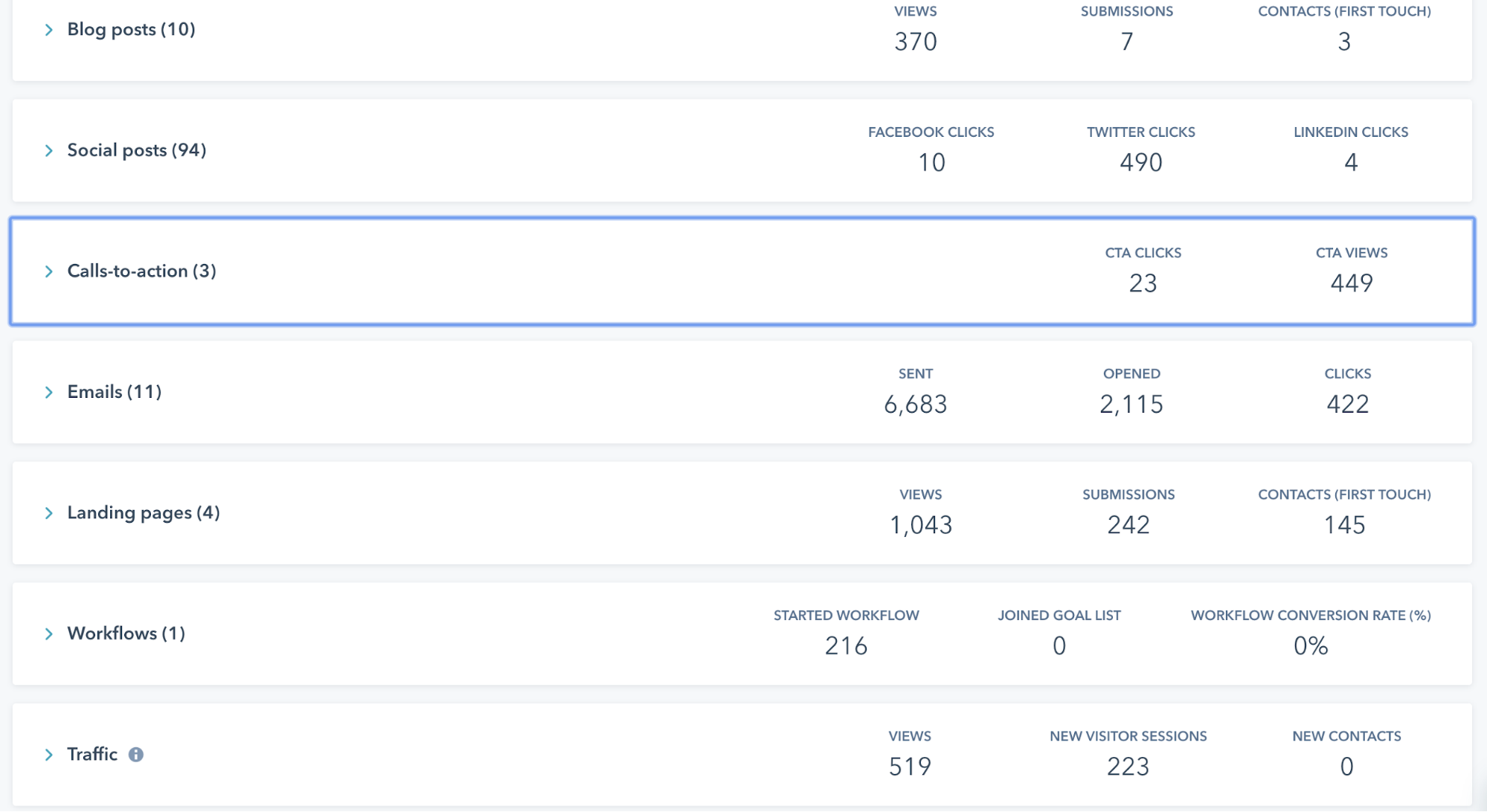
It’s unbelievable how simple this feature is but so powerful.
By linking all this activity to a campaign, you get campaign level reporting that shows you how each element performed. It even goes as far as to tell you what effect the campaign had on your website sessions, new contacts, influenced contacts, deals and revenue.
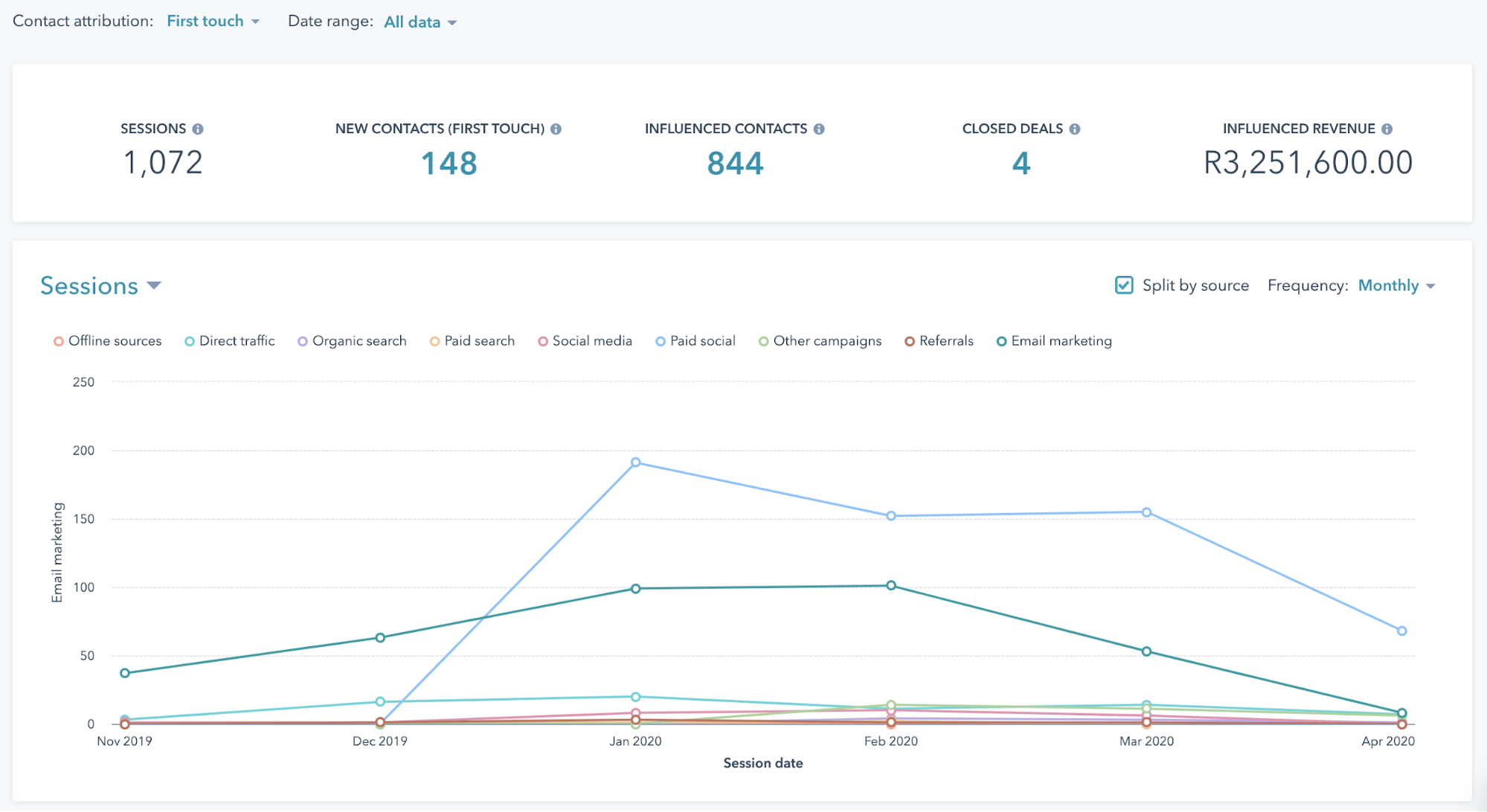
Without a tool like HubSpot, this level of data is largely unavailable or extremely fragmented. With this data now available it is easy to understand where campaigns performed or didn’t.
You don’t have to guess or make assumptions; it’s all there to be used and learned from.
3. Conversational marketing is the future
When most people think of conversational marketing they often think live website chat.
If you’re one of those people you would be wrong...
It’s a live chat on your site but it’s also having conversations on Slack, on Facebook Messenger, on Whatsapp or the phone and even email.
The thing about conversational marketing is that it’s about having conversations where your customers are, at a time they choose. Don’t get me wrong, I’m not advocating for a 24 hr, 7 day a week chat team, well not unless that makes sense for your business.
No, what I am saying is that there is an opportunity to meet your customers where they are, to answer their questions at the times when they are looking for answers.
HubSpot makes this easier than you might think.
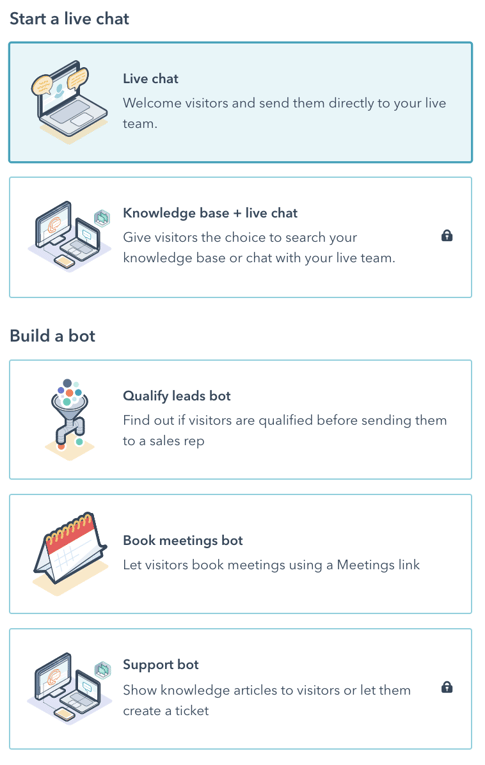 Firstly, and perhaps the one that is immediately the most valuable is being able to connect your current inbox to HubSpot. This makes logging and tracking email conversations with customers easier than ever before.
Firstly, and perhaps the one that is immediately the most valuable is being able to connect your current inbox to HubSpot. This makes logging and tracking email conversations with customers easier than ever before.
HubSpot introduced Chatflows a while ago and it includes a bunch of great features:
- You can add live chat to your website
- You can give your website visitors the choice to first search your FAQ’s or knowledge base or simply connect directly to your chat team
- You can build a bot that starts the conversation and then directs them to the right team member
- You can also use a bot to stand in for your team while they are offline and even book meetings for them
Something we love about Chatflows is that you can integrate Slack so when someone starts a new chat, you or team can receive a notification and respond directly from Slack.
Another great feature is the fact the Facebook Messenger is now natively integrated with HubSpot Chatflows. This means you can send instant replies or use the bot functionality to improve your conversations directly in Facebook Messenger.
4. Build a content strategy that works
At the heart of what we believe makes a good digital strategy is content.
Content gives you the opportunity to educate your customers, meaningfully engage and hopefully add value to whatever challenge or pain point they may have.
It has in recent years become more difficult to get your content to stand out simply because of the sheer amount of new content created each day and because the way people search for answers has changed.
Largely due to the increase in voice search the way we search Google has changed from searching using keywords to now searching the way we talk.
HubSpot was very quick to the mark on this.
While a lot of businesses are still creating content based on long-tail keywords, HubSpot has adapted its content strategy tool to focus on what’s important today: topics, structure and reporting.
Download: The Content Marketing Strategy Template it will help you generate traffic and convert leads.
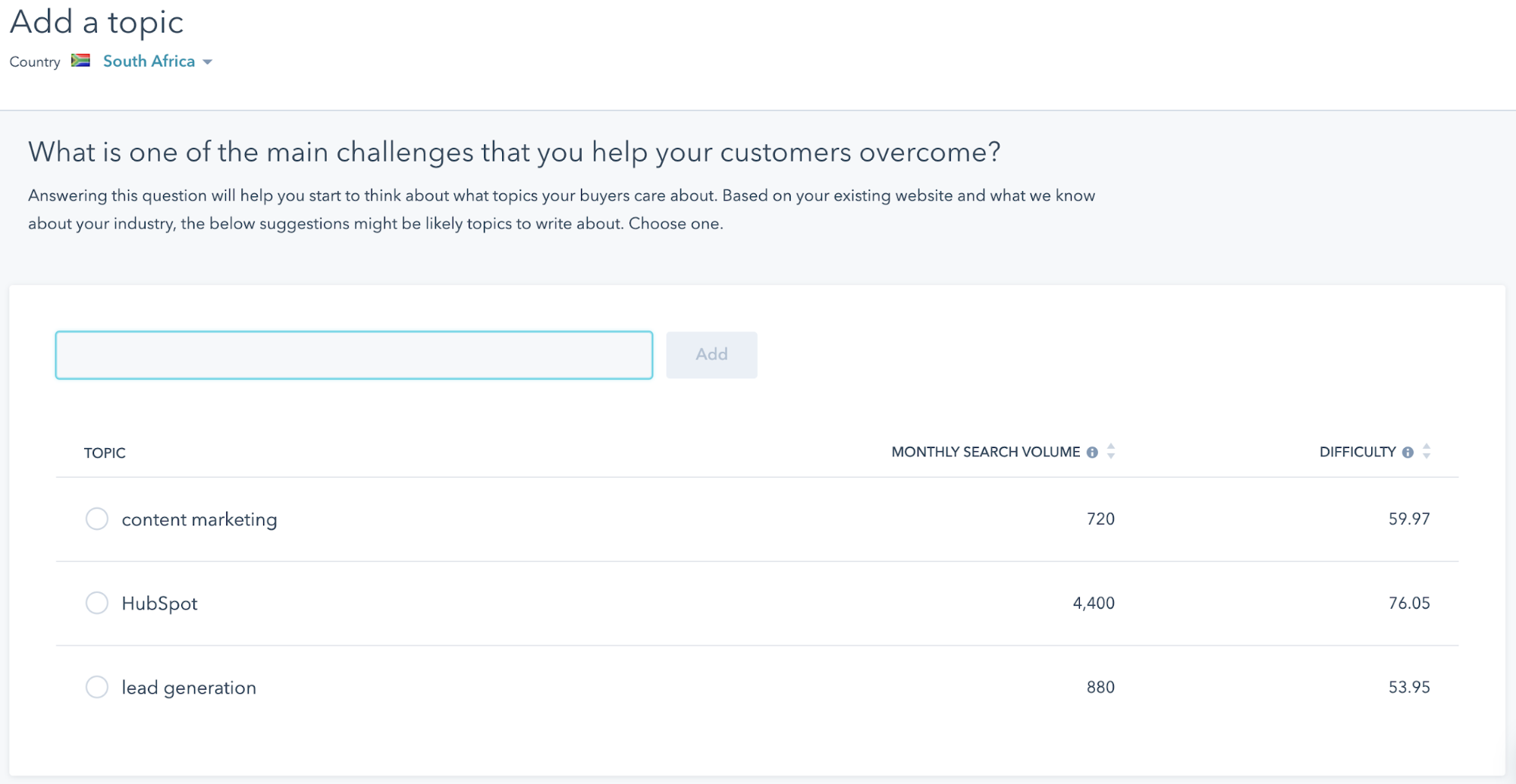
- With HubSpot’s SEO tool it is quick and easy to do topic research. Simply pick your country and add a topic and it’ll give you the monthly search volumes and how difficult it would be to rank for that topic.
- Organise content for humans, optimise it for search engines. Content should not just be scattered all over your site. Your information architecture plays a crucial role in your SEO.
With better internal linking and content planning you can make it easier for visitors to find relevant and related content and make it super easy for Google to understand what you’re about.
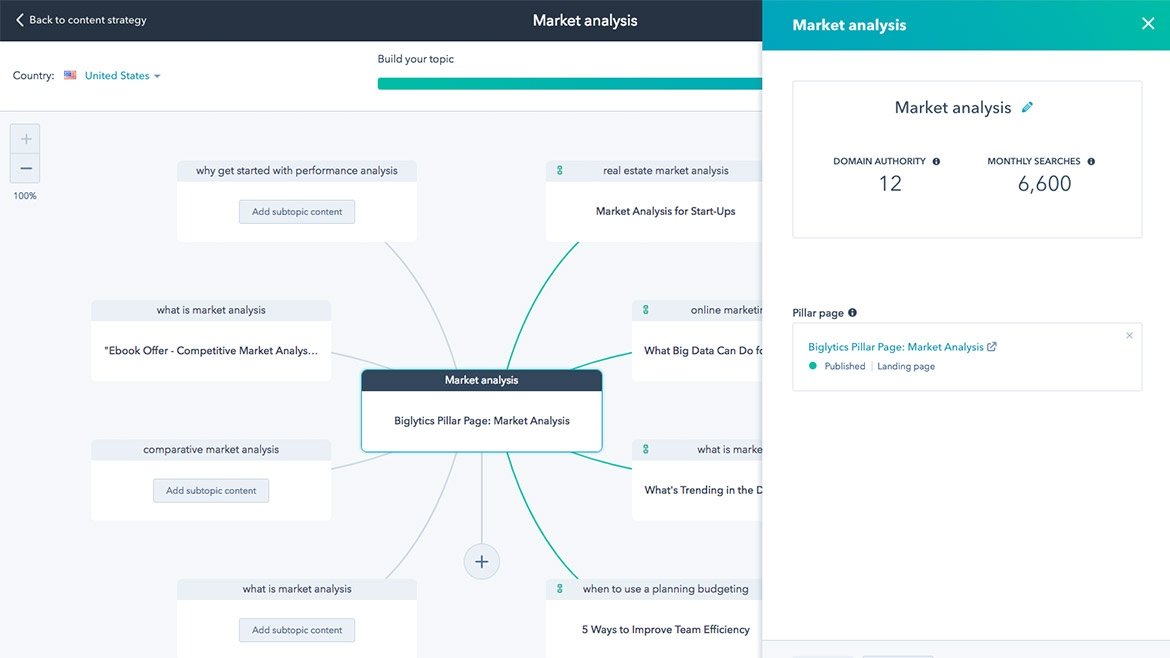
- Find what content is working. Creating content is only a small part of the entire journey. It is important not to simply publish and then forget about your content. Measuring your overall topic cluster performance to see what content is driving leads, and creating its intended value is easy with the content performance report.
HubSpot can’t define that strategy or create that content but it gives you the tools and the data to help you and your team do the best job possible.
5. Social media made simple
What’s really great here is that HubSpot Social lets you manage your social media strategy all in one place. Better yet, you can see exactly how you’re performing on social in the same place you manage all your other marketing efforts.
It’s really that simple.
I think we can all agree that social media is a critical channel for B2B marketers looking to build community, engage with their customers and be a modern brand.
In fact, 92% of marketers say social media is an important part of their business.
That makes sense, of course, the marketing team thinks social media is important. But what does the CEO think? Or the Head of Sales? Or the Ops Director? Or the CFO?
I bet they’re less convinced!
And for good reason. Only 1 in 3 marketers can effectively measure the ROI of their social media activity.
What I find very valuable with HubSpot is necessarily being able to publish content across Facebook, Instagram, Twitter or LinkedIn, or monitor keywords or anything like that.
No, what I think adds the most value here is the reporting. You can get an overview of all the social media performance or deep dive into specific posts or better yet automatically tie back revenue to specific channels.
HubSpot allows you to prove the value your social media strategy is adding or not adding to your businesses bottom line. It’s that level of insight that has the biggest impact on your strategy.
That’s it for part 1 of our little HubSpot mini-series.
In part 2 we will dive into some more advanced features of HubSpot and how they help even small businesses deliver better more sophisticated marketing campaigns.
Here’s a quick look at what we will be covering:
- Smarter ad campaigns
- ROI & attribution reporting
- Promote sales & marketing collaboration
- Adaptive testing
- It’s the future



